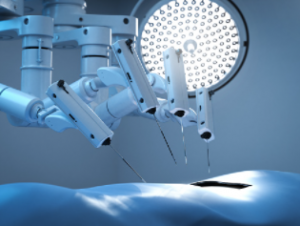What Are the Pros and Cons of Robotic Knee Replacement Surgery?

Robotic Knee Surgery is often the most effective joint replacement procedure available today for patients suffering from knee pain. The advantages of robotic knee surgery come from: optimized intra-operative stability, minimally invasive techniques, improved post-operative stability and increased patient satisfaction. The increased patient satisfaction is achieved due to optimized operative stability and reduced post-operative pain and swelling. Better outcomes and less pain and swelling are seen with robotic-knee-surgery-Adelaide than other knee replacement procedures.
The stability of robotic surgery is improved by minimizing movement risks during the procedure and micro-surgery principles. This minimally invasive technique improves stability by limiting the involvement of the knee cap during the process. As a result, it limits the degree of instability, which is common with other types of minimally invasive surgeries. In addition, the potential for instability is reduced by the fact that the femur is free to move in the plane of the femoral groove in the knee socket and align with the rotation of the femur and tibial plateau. As a result, the internal rotation of the femur occurs at a slower rate. It prevents the instability that is associated with the internal rotation of the femur.
Other advantages of robotic-knee-surgery-Adelaide are: less invasive than standard surgery and minimally invasive. This minimally invasive surgery is done using a tiny incision similar to what is seen in a hip replacement. The incisions made in robotic knee surgery are small, making them easier to treat, with less scarring than traditional approaches. It can be an advantage, especially in conjunction with arthroscopic surgeries. In addition, small punctures can prevent blood clots from building up, which can cause additional complications after surgery and restrict blood flow.
The approach to this surgery is more time consuming than the standard approach. It requires longer and more elaborate surgery to take out large numbers of bone fragments. This type of robotic-knee-surgery-Adelaide is referred to as arthroplasty. A less invasive approach allows for faster recovery and minimally invasive results.
A drawback of robotic knee replacement surgery is the age factor. The older the patient, the greater the risk of joint replacement surgery will be. The average age at which joint replacements are needed is between 55 and 65 years old. Therefore, it makes the candidate longer but better able to recover from their condition.
The benefits are many when it comes to robotic leg surgery. The fact that there is no removal of bone or incision makes for a quicker recovery. Patients are also far less likely to suffer from complications from the procedure. The addition of minimally invasive surgery makes robotic knee replacement surgery the preferred option for many patients who have arthritis.